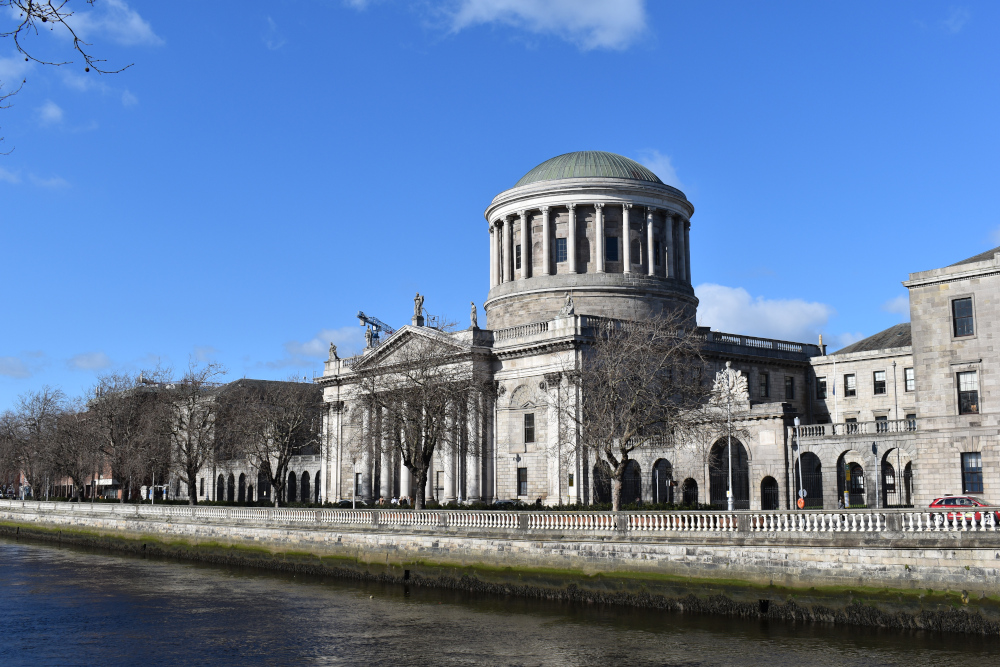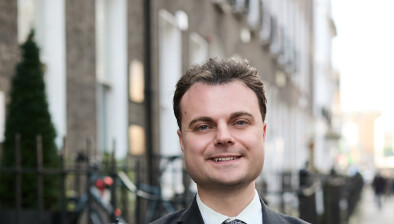Supreme Court: Judges opine on procedures under Proceeds of Crime Act 1996

The Supreme Court has allowed an appeal against orders made pursuant to the Proceeds of Crime Act 1996 in light of “genuinely new” evidence.
Delivering his judgment for the Supreme Court, Mr Justice Peter Charleton opined that upon remittal to the High Court, the task faced by the respondents would be “to overturn the existing s 3(1) order, or to challenge the making of the s 4 disposal order, by evidence which was not previously deployed in order to demonstrate that the property caught by the s 3(1) order did not result from criminal activity”.
Background
In January 2009, the Criminal Assets Bureau (CAB) issued proceedings under the Proceeds of Crime Act 1996 seeking orders pursuant to s.2 and s.3 thereof against Routeback Media AB and the appellant, Harry Zeman, being Routeback’s director.
CAB asserted that the sum of $651,447.82, with continuing interest, held in a Bank of Ireland account in the name of EuroConex Technologies Limited, represented the proceeds of a fraudulent criminal scheme involving sales of email accounts online at a unit price of $9.95.
In 2007, EuroConex, a company which had allegedly entered into an agreement with Routeback to process credit card payments in connection with Routeback’s business, reported to the Garda Bureau of Fraud and to the Revenue Commissioners its suspicion that the payments processed by it might have been generated by crime.
In January 2009, an interim (freezing) order pursuant to s.2 of the 1996 Act was made against the property of Routeback and the appellant by the High Court, followed by the making of a s.3(1) order adjudging the property as being the proceeds of crime, and freezing same for 7 years in January 2011. That order was not appealed in time. Finally, in May 2022, an order pursuant to s.4 divesting the Routeback and the appellant of the property was granted.
The appellant appealed on the basis that the High Court wrongly excluded fresh evidence in the application under s.4 of the 1996 Act, and in a concurrent application under s.3(3) to review and overturn that s.3(1) order, failed to afford fair procedures by refusing the cross-examination of deponents from CAB who had sworn to their belief that the property originated from criminal activity.
The High Court’s judgment was upheld by the Court of Appeal, which considered that although Mr Zeman had filed new evidence on the s.4 application which was relevant to the review application of the s.3 order, there were significant conflicts of fact between the appellant’s affidavits and CAB’s affidavits which could only have been resolved by cross-examination, and no formal application for leave to serve notices of cross-examination had been made to the trial judge.
Issues on appeal
The Supreme Court granted leave to appeal in relation to a respondent’s entitlement to cross-examine CAB deponents, the extent of any duty on part of the trial judge to inform a respondent of the advisability of challenging affidavit evidence by way of their own testimony or through cross-examination, and the interaction between s.3 and s.4 of the 1996 Act with regard to the burden of proof under s.4.
The Supreme Court
Mr Justice Charleton noted that the 1996 Act operates in two separate but interdependent phases, the first being a s.3 application and the second being the s.4 application for final disposal of the property.
The judge observed that this means that the standard principles of bringing all actions and relevant evidence forward for decision in judicial proceedings exemplified in Henderson v Henderson (1843) 3 Hare 100, or the rules regarding the admission of new evidence on appeal as set out in Murphy v Minister for Defence [1991] 2 IR 161 could not be directly applied to the s.4 hearing, with “timeliness, the credibility of late revelation of evidence and argument” remaining the “universal principles”.
Pointing out that “the 1996 Act must be given a workable interpretation”, the judge considered that sections 3 and 4 “should be construed in a fashion which avoids these provisions operating in an inefficient or unduly burdensome manner by, for example, obliging the courts in the s 4 hearing to traverse issues which have already been fully dealt with in the s 3 hearing”.
Pointing out that an order under s.3 is an interlocutory, but final, order where no further trial of the issues is necessary to determine whether a respondent holds property that is the proceeds of time, Mr Justice Charleton highlighted that “it would be expected that anything that a respondent can say as to property not being the proceeds of crime should be put up before the High Court at that s 3 hearing” as that “is the trial” and that if this was not done, this would go the credibility of the evidence.
The judge explained that belief evidence on part of CAB is central to the s.3(1) procedure, but is not admissible under s.4, and that acceptance of same on a prima facie basis reverses the burden of proof onto the respondent, who must then demonstrate on the balance of probabilities that the property is not the proceeds of crime. If the respondent fails in that regard, then an assessment of whether there is a serious risk of injustice in making the order must be undertaken by the trial judge.
Finding that there was nothing in the legislation permitting issues already tried to be tried again and that a s.3(3) application by a respondent to overturn a s.3(1) order cannot be advanced on the basis of the same evidence or previously rejected arguments, Mr Justice Charleton opined that “new evidence is required under s 3(3) and to make a challenge that property is not the proceeds of crime, or that it is unjust to continue an order”.
Observing that the “essence of the 1996 Act, under s.3 under s.4, is that an unjust order should not be made”, the judge noted that where it is possible that inter alia a person who contested a s.3(1) application unsuccessfully or who, at the relevant time, could not offer a contest but could later offer evidence demonstrating that property did not derive from criminal activity, the interests of justice should be considered.
The judge emphasised that the “interests of justice” under s.3(3) requires proof of “any other injustice” resulting from the existence of the interlocutory order, whilst s.3(1) and s 4(8) necessitates proof of a “serious risk of injustice”.
Mr Justice Charleton explained that the threshold to be reached before a s.3(3) application is considered, or whereby a s.4 hearing requires more than the making of a s.3(1) order and the passage of 7 years therefrom, is that the evidence should be apparently credible and should bring a new factual focus to the existing s.3(1) order whereby an ostensibly reasonable case for overturning that order is presented, or whereby a s.4 order should not be made because the property is to be demonstrated as not having an origin in criminal activity, or because a disposal order would be unjust.
As to cross-examination, Mr Justice Charleton pointed out the automatic right under s.8 of the 1996 Act to cross-examine any deponent to a belief that the property in question results from criminal activity, stating that “that is the limit of any statutory right of cross-examination under the legislation” and there is no unlimited right of cross-examination of every deponent who has sworn an affidavit for CAB at any stage of the proceedings.
The judge considered that instead, cross-examination should have taken place at the s.3(1) stage and that upon a s.3(3) or s.4 application, a trial judge will be concerned only with new evidence from the respondent and contrary evidence from CAB, but that “does not open up the s 3(1) hearing again”.
Turning to the judgment of the High Court, Mr Justice Charleton concluded that the error was not in failing to advise the unrepresented respondents or to guide them through every procedure, clarifying: “A judge is there to see that an unrepresented litigant is not taken advantage of. That is the limit of judicial responsibility and whether that is met is to be considered from case to case bearing in mind what are essentially simple principles.”
Instead, the judge considered the High Court’s error to be its failing to realise that the interests of justice required the consideration of material which the Court of Appeal later ruled as fresh evidence.
Mr Justice Maurice Collins, concurring with Mr Justice Charleton’s judgment, expressed that cross-examination should be approached flexibly and that a respondent in a s.3(1) application may cross-examine any CAB deponent on their belief evidence, but that Order 40, rule 36 of the Rules of the Superior Courts applied to any other deponents.
Noting that the position was the formally the same on s.3(3) applications, Mr Justice Collins highlighted that as s.8 belief evidence is not admissible in s.4 applications, no right to cross-examine arises, but leave to examine can be sought.
Mr Justice Brian Murray delivered a dissenting judgment, disagreeing inter alia that an omission to make arguments or introduce evidence before the High Court goes to the credibility of evidence, opining that “it goes further: the jurisdiction of the courts to prevent an abuse of their own processes requires that a case based on evidence or arguments that could have been, but were not, advanced at the first opportunity should not be entertained at a time of the respondent’s choosing”.
Conclusion
Accordingly, the Supreme Court determined that in circumstances where the Court of Appeal ruled that there was new evidence in the case, the appeal was allowed and the matter was remitted to the High Court for a limited hearing on the new evidence.
The Criminal Assets Bureau v Routeback Media AB trading as Local Mart and Harry Zeman [2025] IESC 34










